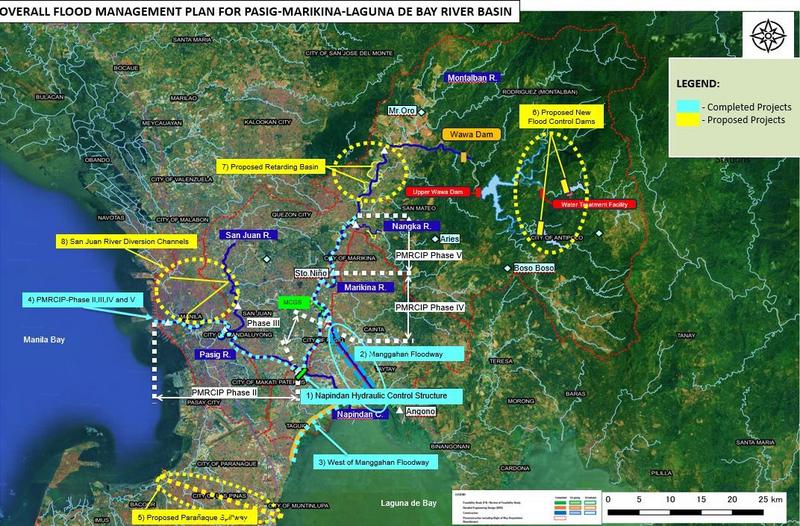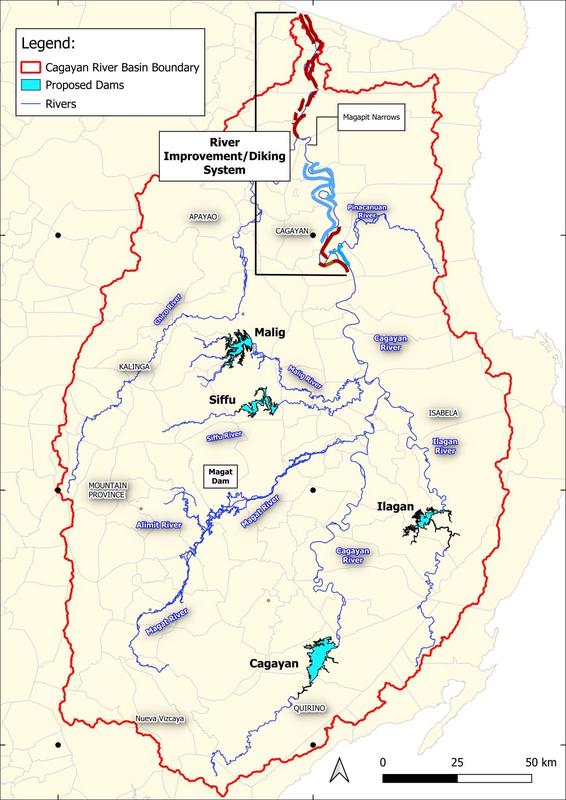The Department of Public Works and Highways, in partnership with the Japan International Cooperation Agency, is intensifying efforts to finalize updated flood control master plans for the Pasig-Marikina and Cagayan River Basins — two major waterways in Luzon that play a crucial role in supporting the economic growth of Metro Manila and the Cagayan Valley region.
DPWH Senior Undersecretary Emil K. Sadain and JICA Senior Representative Takanori Morishima led the presentation and discussion Augist 5 of the draft updated Flood Control Master Plan reports for the Pasig-Marikina and Cagayan River Basins. The plans aim to address the recurring and long-standing problem of widespread flooding while enhancing disaster resilience through both structural and nonstructural measures.
Also in attendance during the Second Steering Committee Meeting for the ongoing Project on the Enhancement of Flood Control Strategy in Prioritized River Basins were DPWH Project Director Ramon A. Arriola III of the Unified Project Management Office–Flood Control Management Cluster, Project Managers Jerry A. Fano, Rhodora Dayco and Grecile Christopher Damo; JICA study teams; and representatives from various agencies, including the Department of Economy, Planning and Development, Department of Environment and Natural Resources, Department of Energy, Department of Finance, Department of the Interior and Local Government, Department of Science and Technology, Philippine Atmospheric, Geophysical and Astronomical Services Administration, National Irrigation Administration, and the Climate Change Commission.
During the meeting, Sadain emphasized the urgency of completing the master plan reports, citing the devastating impacts of past typhoons such as Ondoy in 2009, Super Typhoon Lawin in 2016, Ulysses in 2020, and Carina in 2024, which severely affected vulnerable areas and displaced thousands of families in Metro Manila, Region 2 and other parts of the country.
“In response to President Ferdinand R. Marcos Jr.’s directive to revise the flood control master plans and expand infrastructure capacity to address increasing flood risks and climate change threats, the DPWH, under the leadership of Secretary Manuel M. Bonoan, sought the assistance of the JICA Study Team to fast-track the completion of the pre-feasibility study for each river basin. These will then be developed into full-blown comprehensive analyses to enable the timely implementation of the detailed engineering designs,” Sadain said.
“Once finalized, the updated master plan reports will be submitted to the Department of Economy, Planning and Development for review and approval, with pre-feasibility studies expected to begin in early 2026. These studies and proposed measures, in a holistic approach, are anticipated to support integrated water resources management, improve interagency coordination, and enhance overall risk reduction efforts in Luzon,” he added.
Morishima reaffirmed JICA’s commitment to the Philippine government, emphasizing its long-standing friendship and partnership, and reiterated its support for building resilient, climate-adaptive flood control infrastructure that can withstand the worsening impacts of changing weather patterns.

One key topic discussed was the phased implementation of proposed structural countermeasures for the Pasig-Marikina River. Proposed engineering interventions include building two flow-through dams, four retarding basins in San Mateo, Rodriguez and Quezon City, and river improvement works including dredging under Phases 2 and 3 of the Pasig-Marikina River Channel Improvement Project, a multi-phase effort by the DPWH with JICA technical assistance.
After recent typhoons and flooding, Sadain said it is imperative to consider flood control dams as a countermeasure to reduce damage in Metro Manila.
A separate master plan for the San Juan River was also presented, addressing its low flow capacity due to shallowness, which causes serious flooding in parts of Metro Manila. Proposed solutions include dredging and embankment improvements in Manila, San Juan and Quezon City, an underground retention channel in Quezon City leading to the Pasig River, and an underground spillway from Quezon City to Manila.
These interventions aim to achieve a flood safety level equivalent to a 100-year return period in the Pasig-Marikina River Basin, helping address long-standing flooding and strengthening disaster resilience — in line with the government’s “Bagong Pilipinas” vision.
The draft master plan report for the Cagayan River Basin, presented by JICA Study Team Leader Takahiro Mishina, proposes building four flood control dams — Siffu, Malig, Ilagan and Cagayan — in the northeastern part of Luzon, along with river improvement works and dredging in the Magapit section of the lower Cagayan River.
The Japan-funded technical cooperation program, launched in May 2024, is led by the DPWH UPMO Flood Control Management Cluster and JICA in partnership with CTI Engineering International Co., Ltd., for the Pasig-Marikina River Basin, and consultants Nippon Koei Co., Ltd., Yachiyo Engineering Co., Ltd., and CTI Engineering International Co., Ltd., for the Cagayan River.











